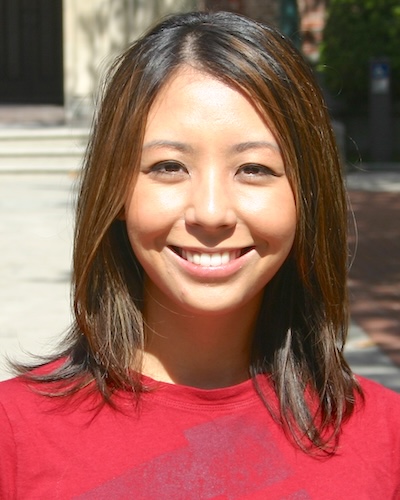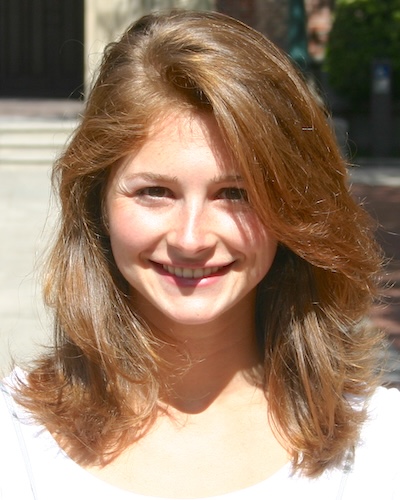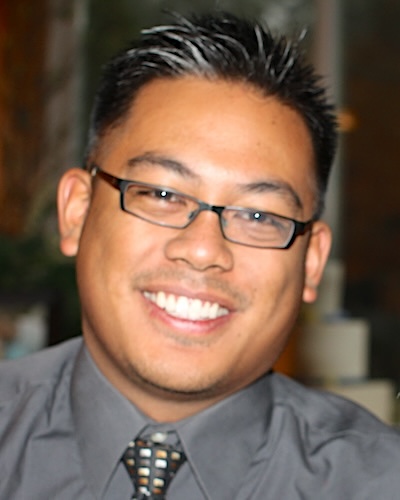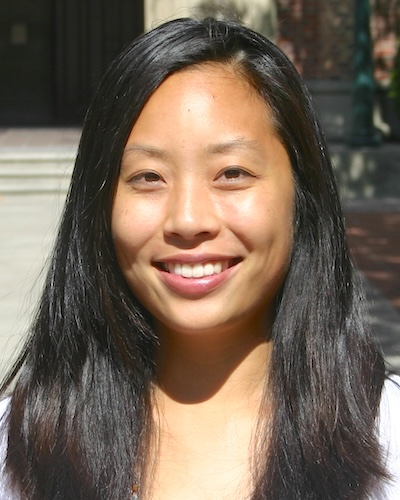Student Blog

Happy holidays! ⟩
December 30, 2010, by Carissa
Happy holidays everyone! I have really enjoyed taking this time off to relax and spend time with my family. I hope you have enjoyed yours too. My family loves hosting holiday parties for our relatives and friends, but has always struggled with getting everyone engaged and interacting. However, while I am not usually the biggest fan of videogames, I must applaud the Wii. My brother, an avid videogame player, tends to keep to himself during these parties and tucks himself away in his room playing his games. However, this year, my sister and I decided to try to bring the Wii out to the living room and buy an extra remote control so that others could play with him. It was a big hit, and encouraged everyone to come together and interact, versus sitting on the sofa watching a movie. The biggest effect was on my usually shy brother, who was able to join and play the role as a leader and teacher during this time. He was all smiles, and I could tell he was having a great time. Playing the Wii created laughter, joy, entertainment, and exercise! I am continually amazed by the effect of different occupations in our lives.
⋯

Clinical Coursework ⟩
December 17, 2010, by Amanda
The path to becoming a clinician . . .
To continue delivering a picture of my experiences in studying occupational science and therapy at USC, I will introduce the clinical coursework. To pursue occupational therapy at some point we all decided that this was a career choice that fits our interests, academically and professionally. Before entering the program, I wondered, ‘how do you know what to do?’; when faced with a client with any number of strengths and limitations in occupational functioning, what is the first step? Furthermore, occupational therapists work with people on a whole continuum of diagnosis and conditions. How does occupational therapy school prepare the practitioner to work with both an individual referred for mental health services and an individual referred for a traumatic brain injury? As I previously explained in a blog post, the summer coursework lays the foundation for analyzing occupation. The first year is to start building your clinical skills. To be prepared to work in the physical disabilities, mental health, pediatrics, and geriatrics setting, there is clinical coursework for each practice area.
In my first year, the structure of the program was you had Fall and Spring courses in physical disabilities. The content covered in this course sequence is evaluation, goal-setting, and intervention planning in relation to various conditions that a practitioner would see in a hospital or clinic setting. Students learn how to identify occupational strengths and deficits as well as the evaluation of underlying skills, such as strength and range of motion. There is also lab based work weekly that involves exploring such varying topics as the uses of adaptive equipment as well as splinting. Also in lab, there is a functional kitchen, bedroom, and bathroom where you practice various techniques learned in therapy such as functional transfers and preparing for occupation-based interventions. You also have the opportunity for an off-campus visit to a national rehabilitation hospital to see occupational therapy in practice.
Mental health also followed Fall and Spring course sequences. Our first semester introduced us to many topics concerning the experience of occupation in relation to such concepts as interests, temporality, habits and the environment. We learned about occupational narrative and its therapeutic use as well as a series of evaluations that are valuable when assessing occupational function. What I loved about this course was its applicability to the other occupational therapy practice areas. For example, it really affirmed my belief that occupational therapists seek to influence not just the condition of having a physical disability but also the person that is experiencing it! The Spring course in mental health continued to explore occupation but to a greater extent its practice in mental health. You really gain an understanding of the efficacy of occupational therapy interventions for those experiencing occupational dysfunction.
Preparation for pediatric therapy comes in a two course sequence as well. In the Fall semester, we studied development. This course covered what you would guess: the development of the child in relation to occupational performance. A series of lectures ranging from reflexes to vestibular to visual development are presented in relation to a child’s age and condition. Students are also introduced to various assessments used in pediatrics. In the Spring, the student’s knowledge in pediatric practice is expanded through the exploration of the various practice areas, such as school-based versus early intervention clinics, and introductions to different intervention strategies, like sensory integration. Students have a few labs off-campus where we were able to observe therapists in the various pediatric settings.
A practice area where demand for occupational therapists is on the rise is in geriatrics. Our clinical coursework in aging involves the physical, cognitive, environmental, and emotional challenges that individuals and their families face during the aging process. I loved this course for our engaging discussions, such as occupational therapists role in hospice care, and for encouraging occupational therapists to be involved in the prevention of decline and maintenance of wellness, as seen in USC’s Well-Elderly Study. As I am interested in occupational therapy practice in geriatrics and always felt very empowered that as an occupational therapist I will be able to make a difference in the lives of people through the power of engaging in meaningful occupation!
In summary, the clinical coursework you will take at USC prepares you to view an individual through an occupational lens whether he or she is a child, adolescent, adult, or older adult referred for varying reasons. You are prepared to evaluate individuals and create interventions that address the physical, social, emotional, environmental, and cognitive components of occupation. This all sounds like a lot in your first year, but there’s MORE! You also have coursework that supports your development of clinical skills. To Be Continued!
⋯

Fall semester is done! ⟩
December 14, 2010, by Pierre
Beginnings and Endings Classes Community
It truly has been a great experience here at USC. I can just remember the first summer semester like it was yesterday . . . and now, I have 1 more semester to go and 1 more fieldwork to experience and then almost done! Can’t say I’m looking forward to comprehensive exams at next year or studying for the NBCOT exam, but I’m happy to have gone to USC for my education. They say all education is the same — in the end you get the same degree, but with the debt is the main difference.
It’s true, that USC didn’t have the lowest tuition among the schools I was applying to last year, but I can say that all the classes, the teacher interaction, the scholarships available, the resources abounding, the OT history among our hallways, the career positioning within the city, the diverse/international fieldwork affiliations, the networks you create, the USC name behind the degree, and the overall supportive culture among the students and faculty are beyond tuition costs. It’s one thing to base an education on financial costs vs quality of education . . . USC puts student learning first and really seeks to prepare us for the real world of OT.
⋯

Interdisciplinary Communication ⟩
December 6, 2010, by Yao
Community Getting Involved What are OS/OT?
The importance of interdisciplinary communcation and engagement.
This past weekend Amanda and I were a part of an interdisciplinary health fair put on by Keck Medical School at one of the local high schools. It was a great opportunity to learn about the other members of a potential medical team and interact with the community.
One fact that I found fascinating was that although a lot of the participants were medical school students, pharmacy students, physician’s assistant students and physical therapy students, many weren’t really sure of what occupational therapists did and to what extent. On the same side we weren’t aware of the full breadth at which these groups also participated in patient care, so it turned out to be an amazing learning experience on both ends. It’s important to have more events that include the different members of a potential team.
I have to admit that Amanda and I had a hard time thinking of what to say when the other disciplines asked what exactly it was that we did as occupational therapists. It wasn’t because we weren’t sure, it was the fact that there were so many ways that occupational therapists went about treatments depending on the situation and patient. We weren’t sure how to give an in-depth understanding including all the different capacities at which and occupational therapist could work. Finally, we decided to use the sensory integration station that we had set up to help open up discussion about the role of occupational therapists. The station consisted of two large Tupperware containers, one full of black beans and the other with lentils. Buried inside each container were little miniature animals (Polly Pocket sized) and the goal was for the participant to find as many animals as possible with their eyes closed. Skills such as touch discrimination, stereognosis, maintaining attention, and standing balance were all used in this one activity. It helped the other professions understand that occupational therapists used meaningful activities and in this example of a pediatric client, play would be their meaningful occupation as a way to work on developing skills to help them engage more successfully with the environment. It was the most popular activity at the fair and gave us an opportunity to talk about occupational therapy and for the participants to understand through hands-on experience what occupational therapy can do. I’m so glad we had the opportunity to participate and get to know about all members of a potential interdisciplinary team and I’m looking forward to future mixer events.
⋯

Occupational Justice ⟩
November 9, 2010, by Pierre
What is occupational justice? Is it like social justice? Kind of. Social justice may look at making opportunity equal to all to reduce differences; occupational justice looks at the unique differences of individuals and groups and how to help them access opportunities as they relate to occupations. It’s interesting to be learning more about how occupational therapy goes beyond the clinics and pervades our society, our culture, politics, and so on. OT in Occupational Justice attempts to meet the unique needs of the individual in order to access the opportunity of health through occupation.
Do you have a passion to help others and to help them access their natural need and desire to ‘do’ activities, to live life, and to be a part of our society? Occupational therapy is a field that is present in many different areas — this is a sign of OT’s strength. Our profession pervades so many aspects and it’s due to the great importance that people need and want to do occupations-activities-life. We seek to help others improve and access a quality of life that is rightfully theirs within a diverse culture such as ours.
⋯





